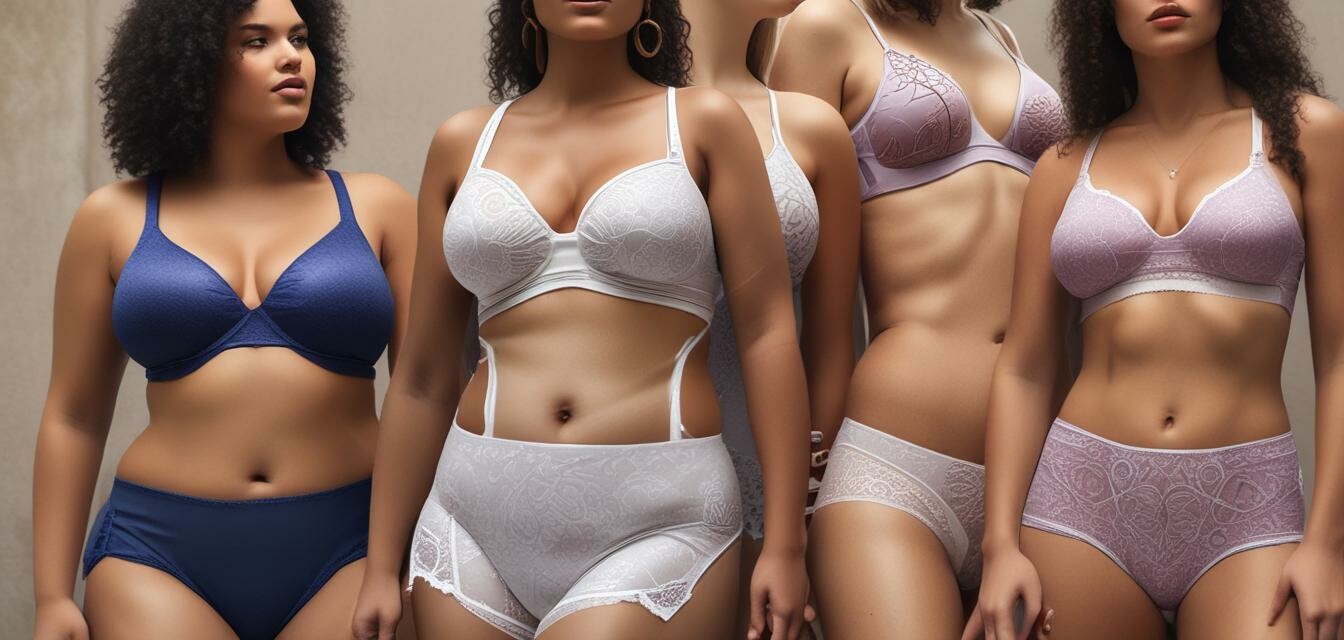
The sustainability shift in plus-size lingerie
Key takeaways
- The plus-size lingerie market is adapting to sustainable practices.
- Eco-friendly materials are becoming increasingly available.
- Several brands are leading the charge in responsible production.
- Body positivity and sustainability go hand in hand.
The lingerie industry has seen a significant transformation in recent years, especially in the plus-size segment. With increasing awareness about environmental issues, brands are exploring sustainable practices that not only cater to body positivity but also prioritize eco-friendliness. In this article, we will delve into the movement towards sustainable practices in plus-size lingerie production, focusing on the eco-friendly brands and materials driving this crucial change.
The rise of eco-friendly materials
Many consumers are now looking for products made from sustainable materials. This has prompted the lingerie industry, particularly the plus-size sector, to explore various eco-friendly fabrics. Here are some of the most common materials being used:
| Material Type | Description |
|---|---|
| Organic Cotton | Grown without synthetic pesticides and fertilizers, making it better for the environment. |
| Bamboo Fabric | A renewable resource that is soft, breathable, and biodegradable. |
| Recycled Polyester | Made from recycled plastic bottles, this fabric helps reduce plastic waste. |
| Modal | A type of rayon that is made from beech trees and is produced in a sustainable manner. |
| Hemp | A strong and durable fiber that requires fewer chemicals to grow. |
Brands paving the way
Several plus-size lingerie brands are embracing sustainability and setting new standards in the industry. Here are some brands leading by example:
- Brand A: Specializing in organic cotton lingerie with a focus on comfort and style.
- Brand B: Known for its use of recycled materials in creating timeless pieces.
- Brand C: This brand focuses on ethical manufacturing and offers a wide range of size-inclusive options.
- Brand D: Innovates with bamboo fabrics for a softer touch all while being eco-friendly.
Understanding the benefits of sustainable lingerie
Investing in sustainable lingerie is not just good for the planet; it can also offer numerous benefits for wearers:
- Comfort: Eco-friendly materials are often more breathable and softer against the skin.
- Durability: Sustainable fabrics tend to last longer, providing better value for your investment.
- Style Variety: Many brands offer stylish, trendy designs that cater to different tastes while staying eco-conscious.
- Supporting Ethical Practices: Purchasing from eco-friendly brands means supporting fair labor practices.
The body positivity connection
Body positivity and sustainability share a common goal: promoting confidence and self-acceptance. When plus-size lingerie is made with sustainable practices, it sends a powerful message that embraces all body types while caring for the environment. This movement calls for inclusiveness in the fashion industry and celebrates diversity.
Promoting awareness
As a society, promoting awareness around sustainable lingerie options can help consumers make informed choices. Engaging with brands that value both the planet and their customers is essential for the growth of sustainable practices. Here are some actionable tips for consumers:
Tips for choosing sustainable lingerie
- Research brands and their manufacturing processes.
- Look for certifications such as Fair Trade or GOTS.
- Prioritize quality over quantity to reduce waste.
- Consider thrifting or buying from second-hand sources.
The future of plus-size lingerie
As the demand for sustainability increases, the plus-size lingerie market is expected to evolve. Brands will likely innovate further, exploring new materials and ethical practices that align with consumer values. This shift not only benefits the environment but also empowers individuals to feel confident in their bodies while making responsible choices.
Conclusion
In summary, the sustainability shift in plus-size lingerie is a movement that promotes eco-friendliness while celebrating diversity in body types. By choosing sustainable materials and supporting brands committed to ethical practices, consumers can make a positive impact. As you explore your options, remember that the future of lingerie can be both stylish and sustainable.
Pros
- Eco-friendly materials offer lower environmental impact.
- Stylish and diverse options available for all body types.
- Supports ethical labor practices.
Cons
- Higher price points compared to fast-fashion alternatives.
- Limited availability in some markets.
For further insights into the plus-size lingerie market, check out our articles on latest trends, explore buying guides, or discover our range of alluring corsets and stylish panties.
